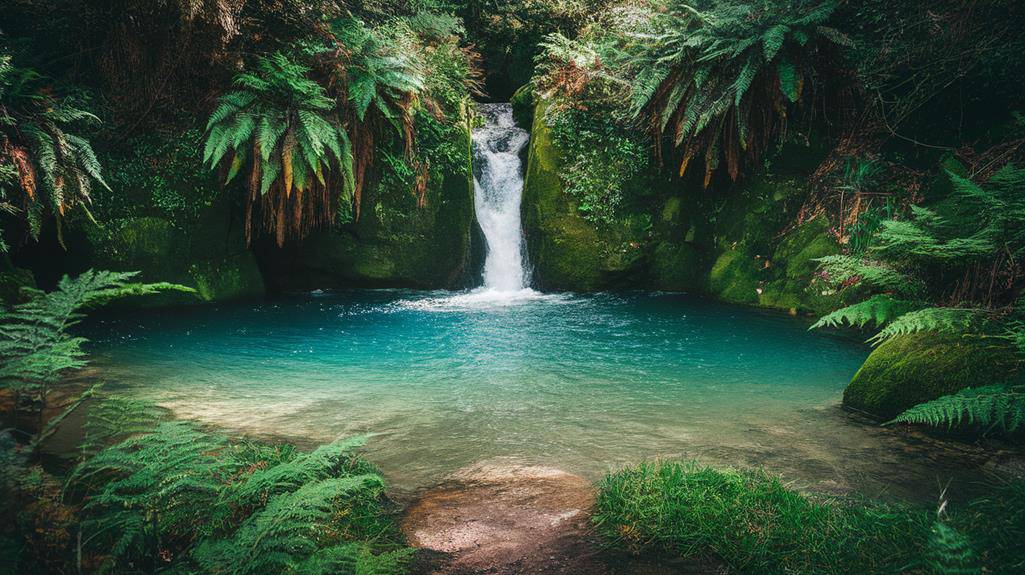
5 Secret Adventure Spots You’re Missing
For the intrepid traveler seeking off-the-beaten-path adventures, five secret spots await your discovery. Namibia's Skeleton Coast conceals the hidden Hoanib Valley Camp, accessible only by light aircraft. Vietnam's Phong Nha-Ke Bang National Park boasts the world's largest cave, Son Doong, stretching over 5 kilometers. East Greenland's secret fjords offer pristine wilderness and diverse wildlife, best explored during the brief summer months. Patagonia's Torres del Paine National Park harbors lesser-known trails like the challenging Objeto Trail and remote Zapata Circuit. French Polynesia's secluded atolls, including Rangiroa, Fakarava, and Tikehau, provide unparalleled opportunities for exploration and solitude. These hidden gems promise unique experiences for those willing to venture beyond the ordinary.
In a Nutshell
- Hoanib Valley Camp in Namibia's Skeleton Coast offers eco-luxury amid desert wildlife and stunning landscapes.
- Son Doong and Paradise Cave in Vietnam's Phong Nha-Ke Bang National Park showcase massive underground worlds.
- East Greenland's secret fjords provide pristine wilderness with glaciers, icebergs, and diverse Arctic wildlife.
- Lesser-known trails in Torres del Paine National Park offer challenging hikes away from Patagonia's crowds.
- Remote atolls of French Polynesia feature untouched beaches, vibrant marine life, and exceptional diving opportunities.
Hidden Oasis in Namibia's Skeleton Coast
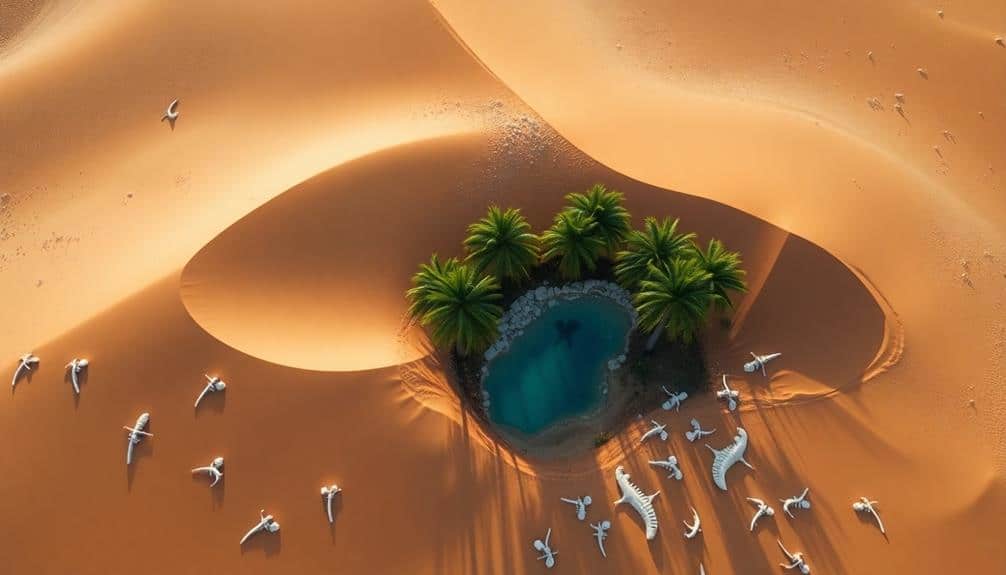
Nestled between towering sand dunes and the treacherous Atlantic coastline, Namibia's Skeleton Coast hides a remarkable secret. A hidden oasis, known as Hoanib Valley Camp, offers intrepid travelers a unique wilderness experience. This exclusive eco-camp, accessible only by light aircraft, provides a stark contrast to the surrounding desolate landscape. You'll find yourself immersed in a surprisingly lush environment, teeming with desert-adapted wildlife. For those seeking comfort in the wilderness, the camp offers 3-season sleeping bags suitable for the region's varied climate, ensuring a cozy night's rest after a day of exploration.
The camp's six tented suites, crafted from locally sourced materials, blend seamlessly with the rugged terrain. Each unit features a private viewing deck, offering panoramic vistas of the Hoanib River and its ephemeral ecosystem. During your stay, you can venture on guided game drives to track elusive desert elephants, lions, and giraffes. For the adventurous, guided walks along ancient riverbeds reveal fascinating geological formations and remnants of prehistoric human habitation.
Untouched Caves of Phong Nha, Vietnam
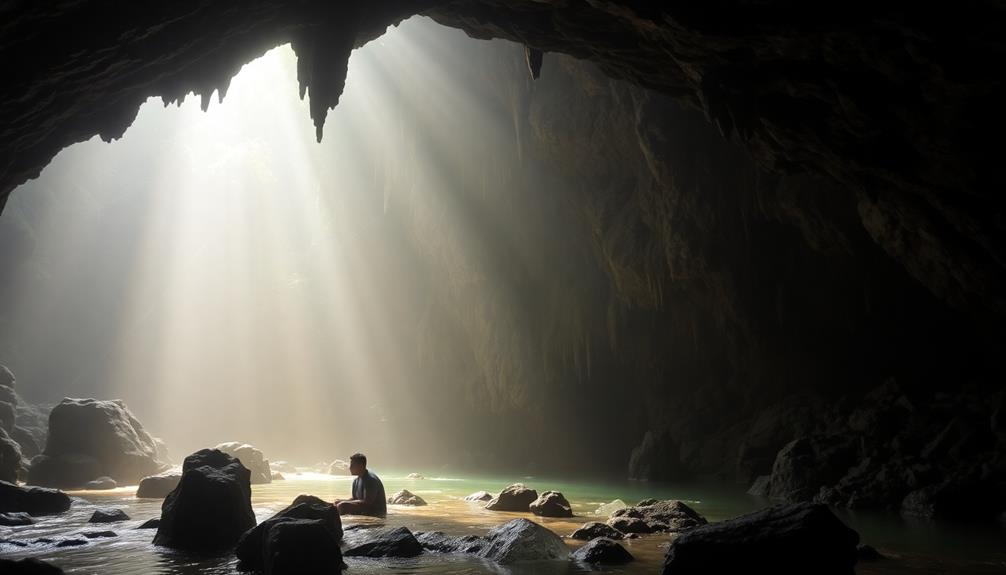
Rarely explored by tourists, the Phong Nha-Ke Bang National Park in central Vietnam harbors some of the world's most spectacular cave systems. You'll find an underground wonderland of limestone formations, subterranean rivers, and cavernous chambers that have remained largely untouched for millennia. Son Doong, the world's largest cave, stretches over 5 kilometers long and reaches heights of 200 meters. It's so vast that it has its own microclimate and ecosystem. For a less challenging adventure, Paradise Cave offers 31 kilometers of accessible walkways, showcasing stunning stalactites and stalagmites. These caves provide a unique opportunity for suitable exploration in a natural setting, combining discovery with fitness. To fully experience these geological marvels, book a guided tour with a reputable operator. They'll provide essential safety equipment and expert knowledge of the caves' unique features. Remember to wear sturdy footwear and bring a headlamp for ideal exploration of these hidden geological treasures.
Secret Fjords of East Greenland
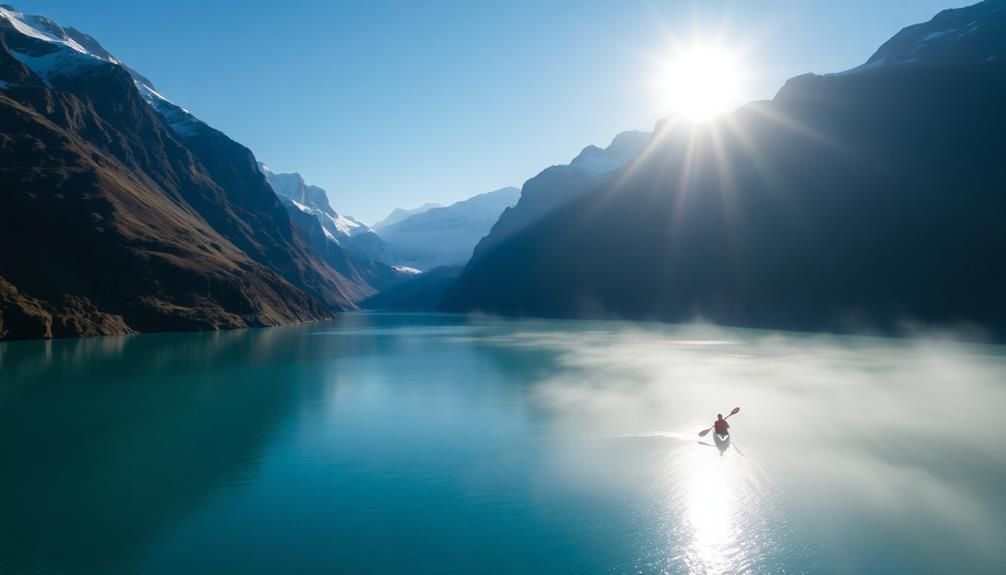
Isolation defines the secret fjords of East Greenland, a pristine wilderness rarely seen by outsiders. These hidden waterways, carved by ancient glaciers, wind through towering mountains and offer unparalleled opportunities for exploration. You'll find yourself surrounded by jagged peaks, floating icebergs, and diverse wildlife, including polar bears, musk oxen, and various seabirds. When setting out on this adventure, it's vital to choose the right travel backpack to carry your essential gear comfortably and efficiently. To access these remote fjords, you'll need to arrange specialized transportation, typically involving a combination of flights and boat transfers. The best time to visit is during the brief summer months, from June to August, when the ice retreats and allows for safer navigation. Hiking, kayaking, and wildlife photography are popular activities in this untouched landscape. Remember to pack appropriate cold-weather gear and supplies, as amenities are scarce in this isolated region.
Undiscovered Trails in Patagonia's Torres Del Paine
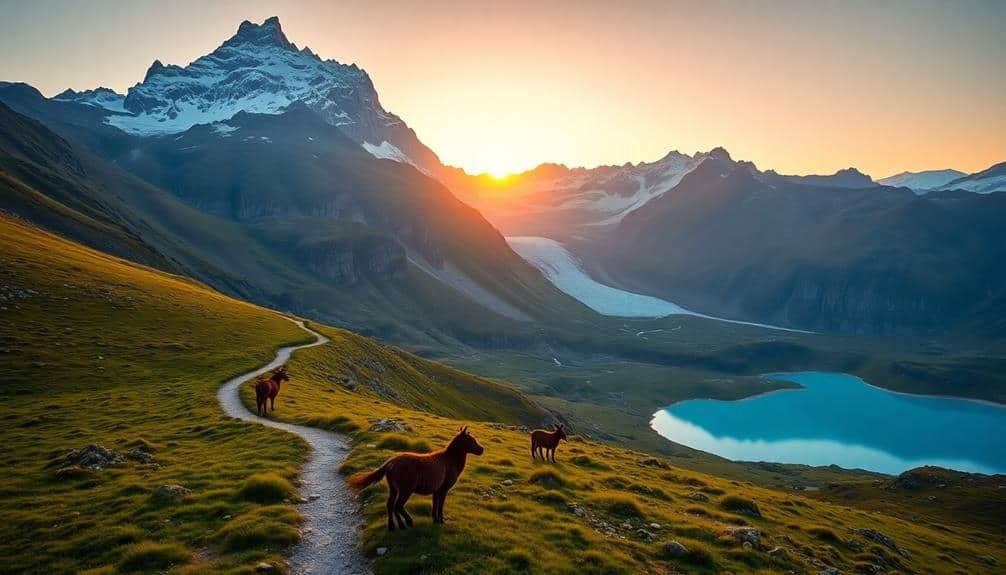
Patagonia's Torres del Paine National Park hides lesser-known trails that offer intrepid hikers a chance to escape the crowds. While the W and O circuits draw most visitors, you'll find solitude on the Objeto Trail, a challenging 12-kilometer route that winds through dense forests and rocky terrain. This path, accessible from the Paine Grande campsite, rewards hikers with panoramic views of the park's iconic granite spires and glacial lakes.
For a multi-day adventure, consider the Zapata Circuit, a 50-kilometer loop that takes you through remote valleys and past the stunning Zapata Glacier. This trail, requiring advanced navigation skills and proper equipment, showcases the park's diverse ecosystems and wildlife. You'll need to obtain special permits and arrange transportation to the trailhead, but the effort is well worth the unparalleled wilderness experience you'll gain.
Remote Atolls of French Polynesia
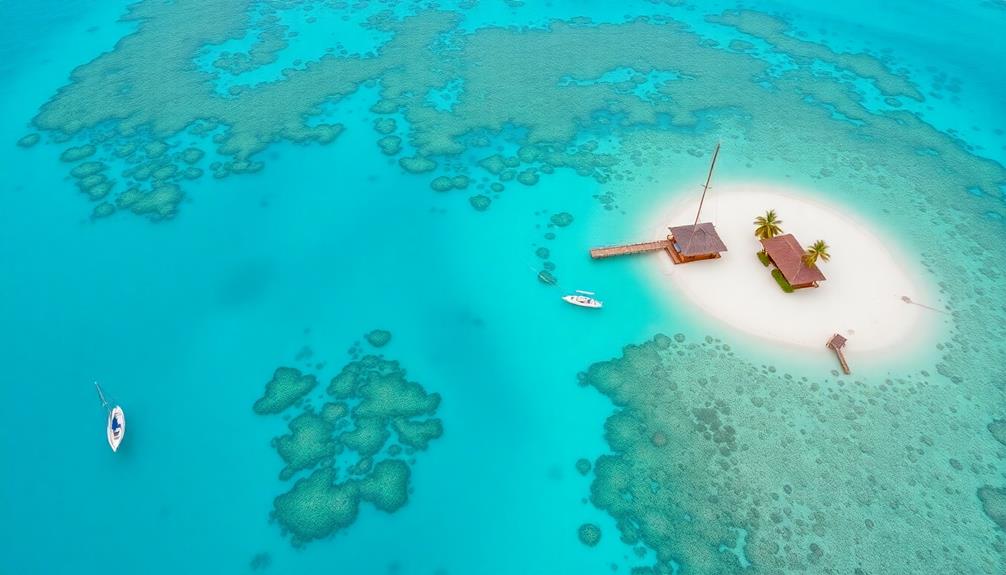
Beyond the well-trodden paths of Bora Bora and Tahiti, French Polynesia's remote atolls offer adventurers a chance to experience true paradise. These secluded coral rings, barely visible above sea level, provide unparalleled opportunities for exploration and solitude. You'll find pristine beaches, crystal-clear lagoons, and vibrant marine ecosystems teeming with life.
When planning your atoll expedition, consider these essential factors:
- Transportation logistics: Many atolls are accessible only by small aircraft or boat
- Accommodation options: Limited to basic guesthouses or camping facilities
- Self-sufficiency: Bring necessary supplies, as amenities are scarce
The atolls of Rangiroa, Fakarava, and Tikehau offer exceptional diving and snorkeling experiences. Rangiroa's Tiputa Pass is renowned for its shark populations, while Fakarava's UNESCO Biosphere Reserve boasts an abundance of marine life. Tikehau's pink sand beaches and rich bird populations provide unique terrestrial attractions.
Frequently Asked Questions
How Can I Prepare for Extreme Weather Conditions in These Remote Locations?
To prepare for extreme weather in remote locations, you'll need to invest in high-quality, weather-appropriate gear. Start with a reliable, four-season tent and a sleeping bag rated for low temperatures. Pack moisture-wicking base layers, insulating mid-layers, and waterproof outer layers. Don't forget a sturdy, insulated pair of boots and weatherproof gloves. Carry a thorough first-aid kit, emergency shelter, and multiple fire-starting methods. Research the specific conditions you'll face and bring appropriate navigation tools, such as a GPS device and topographic maps.
What Vaccinations or Medications Are Recommended for These Adventure Destinations?
Before setting out on adventure destinations, you'll need to consult with a travel health specialist for personalized recommendations. Typically, you should guarantee your routine vaccinations are up-to-date, including measles, mumps, rubella, and tetanus. Depending on your destination, you may require additional vaccinations such as hepatitis A, typhoid, yellow fever, or Japanese encephalitis. Don't forget to ponder malaria prophylaxis if traveling to endemic areas. It's indispensable to start this process early, as some vaccines require multiple doses over several weeks.
Are There Any Cultural Sensitivities I Should Be Aware of When Visiting?
When visiting new destinations, you'll want to be aware of cultural sensitivities to guarantee respectful interactions. Research local customs, dress codes, and etiquette before your trip. Be mindful of religious practices, photography restrictions, and appropriate behavior at sacred sites. Learn basic greetings in the local language, and respect personal space norms. In some cultures, public displays of affection are frowned upon, while in others, direct eye contact may be considered rude. Always ask permission before photographing individuals, especially in rural areas.
How Reliable Is Cell Phone Coverage and Internet Access in These Areas?
Cell phone coverage and internet access in remote areas can be unreliable. You'll likely encounter spotty signals or complete dead zones, depending on the location's terrain and distance from towers. It's wise to download offline maps and essential information before your trip. Satellite phones or portable Wi-Fi hotspots might be necessary for consistent connectivity. Remember, many adventure spots intentionally lack coverage to preserve their natural setting, so prepare accordingly and embrace the opportunity to disconnect.
What Emergency Services Are Available in Case of Accidents or Injuries?
Emergency services in remote areas can be limited, so you'll need to be prepared. You should research local resources before your trip, including nearby hospitals, ranger stations, and search and rescue teams. Many areas have volunteer emergency responders, but response times may be longer than in urban settings. It's imperative to carry a well-stocked first aid kit, know basic wilderness first aid, and consider bringing a satellite communication device for emergencies where cell coverage is unreliable.
